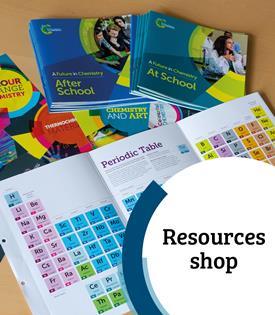Science research news - extracts for your class – Page 4
-
 News
NewsCarbon dioxide catalysis making jet fuel
Use this starter slide to begin your lessons on catalysts or ways of reducing global warming
-
 News
NewsHow ancient Maya peoples made potable water
Use this starter slide to begin your lessons on drinking water and water treatment with some historical context
-
 News
NewsNanoparticle starves cancer cells of copper
Start your lesson with this starter slide on one medicinal application of nanotechnology
-
 News
NewsGenerating high value chemicals
Plastic waste could be upcycled into a chemical that is more valuable than the original plastic
-
 News
NewsSeeding the ocean against climate change
Volcanic ash could be a key ingredient to sequester carbon dioxide
-

-

-

-

-
 News
NewsDiamond helps to discover hexagonal salt
Explore ionic structures in your class with the discovery of a strange form of table salt
-
 News
NewsBreaking the carbon–hydrogen bond
A new photocatalyst that can act on small alkane hydrocarbons is a rare example of directly using natural gases as reagents
-
 News
NewsYeast thriving in hydrogen
Microorganisms growing in 100% hydrogen show that life could exist on exoplanets
-
 News
NewsHow to build a record-breaking carbohydrate
Download this slide and delve into the topic of synthetic and naturally occurring polymers; exploring sugar chemistry and organic compounds with your class
-
 News
NewsShed light on benzene reactivity in fizzy drinks
Downloadable slide on the organic chemistry in cherry-flavoured soft drinks for your class
-
 News
NewsA more energy-efficient lithium electrolysis
Could a ceramic hold the key to cheaper and less noxious lithium extraction using electrolysis?
-
 News
NewsAntidepressants in waste water may cause potent tap water toxin
Waste water ozone and chlorination treatments: Prozac and methamphetamine may be the cause of toxic nitrochloroform in tap water
-
 News
NewsTurning PVC green
Platinum might be the catalytic key to reducing the environmental impact of mercury pollution
-
 News
NewsCoronavirus: the science behind handwashing
Delve into the chemistry behind the spread of this new virus
-
 News
NewsCFCs and their role in Arctic sea ice loss
Show students the heat trapping properties of halogenated organic compounds
-
 News
NewsAn eye for wearable tech
The smart contact lens equipped with a rechargeable supercapacitor that won’t interfer with vision











